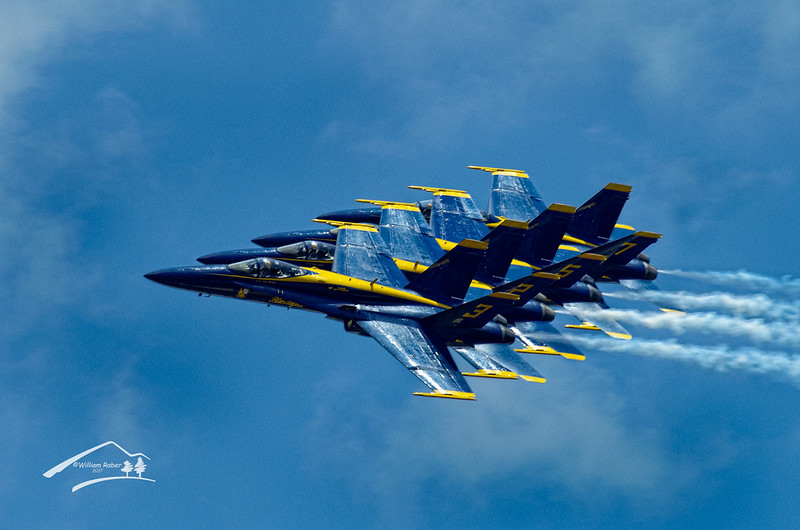phkc070408
TPF Noob!
- Joined
- Jan 4, 2015
- Messages
- 34
- Reaction score
- 5
- Can others edit my Photos
- Photos OK to edit
Hi all:
I'm an aviation fan and enjoy going plane-spotting once in a while. I just moved to a location that is right on the landing track for a major airport. Planes fly above my house at about 300 feet, maybe a little lower. I've tried going to a local park to take pictures of them but for some reason can't seem to get a good crisp clear picture.
One thing to consider is the planes are at about 300f elevation, meaning if I'm directly under them, I'm probably closer ro 8,000 10 10,000 feet from them directly when I'm shooting.
I use a full frame Canon 5D Mark iv. My les of choice is the Tamron SP 150-600mm f/5-6.3 Di VC. I attached a few sample shots. These were taken at 1/400 and an ISO of 1600, and the zoom fully extended to 600mm. I used Shutter Priority which resulted in an f11 and f7.1 for the two images, and bracketed the shots. I'm using auto-focus with AI Servo and the setting that auto-focuses on any object that moves into the field. The AF points are doing a great job of locking onto the subject since it's very clear to the camera what the subject it (nothing else but the sky is in the picture). Oh, and of course I shoot raw.
I suspect I need to get more zoom somehow, but would like to hear what you have to say.
I read up on teleconverters and their pros and cons. I see that Tampon has a 1.4x and a 2.0x converter made specifically for my lens. While I realize you make sacrifices on the maximum F, I really don't have $15k to go out and buy a 1200mm lens.
Finally, these two images were my better ones, with the planes closer to me.
Can anyone please help me with this?
Update: This just dawned on me as I was writing this - should I reduce my f down to a lower number? While my subject is 10,000 feet away, my subject is less than 200 feet in depth, a 2% ratio. Any use of a large aperture is only bringing air molecules into focus.
Second update: I always have to crop these images significantly, to the point that a normally ok 1600 ISO is now very grainy. This support my opinion that I need more zoom.
I'm an aviation fan and enjoy going plane-spotting once in a while. I just moved to a location that is right on the landing track for a major airport. Planes fly above my house at about 300 feet, maybe a little lower. I've tried going to a local park to take pictures of them but for some reason can't seem to get a good crisp clear picture.
One thing to consider is the planes are at about 300f elevation, meaning if I'm directly under them, I'm probably closer ro 8,000 10 10,000 feet from them directly when I'm shooting.
I use a full frame Canon 5D Mark iv. My les of choice is the Tamron SP 150-600mm f/5-6.3 Di VC. I attached a few sample shots. These were taken at 1/400 and an ISO of 1600, and the zoom fully extended to 600mm. I used Shutter Priority which resulted in an f11 and f7.1 for the two images, and bracketed the shots. I'm using auto-focus with AI Servo and the setting that auto-focuses on any object that moves into the field. The AF points are doing a great job of locking onto the subject since it's very clear to the camera what the subject it (nothing else but the sky is in the picture). Oh, and of course I shoot raw.
I suspect I need to get more zoom somehow, but would like to hear what you have to say.
I read up on teleconverters and their pros and cons. I see that Tampon has a 1.4x and a 2.0x converter made specifically for my lens. While I realize you make sacrifices on the maximum F, I really don't have $15k to go out and buy a 1200mm lens.
Finally, these two images were my better ones, with the planes closer to me.
Can anyone please help me with this?
Update: This just dawned on me as I was writing this - should I reduce my f down to a lower number? While my subject is 10,000 feet away, my subject is less than 200 feet in depth, a 2% ratio. Any use of a large aperture is only bringing air molecules into focus.
Second update: I always have to crop these images significantly, to the point that a normally ok 1600 ISO is now very grainy. This support my opinion that I need more zoom.
Last edited:








![[No title]](/data/xfmg/thumbnail/30/30866-bdfc426e8ee7e6ad63f6d751c5f288f0.jpg?1734158835)
![[No title]](/data/xfmg/thumbnail/30/30986-0fbf9af8f70b46ce37aeb237ba68b573.jpg?1734159039)


![[No title]](/data/xfmg/thumbnail/31/31093-5a5bf042a168153ccffbce7a66501050.jpg?1734159240)


![[No title]](/data/xfmg/thumbnail/30/30862-d177ccfc3a82369b1005863cfe5fd13d.jpg?1734158821)

![[No title]](/data/xfmg/thumbnail/31/31094-f975d7e61424996edc28cec3b9dd70a8.jpg?1734159245)
![[No title]](/data/xfmg/thumbnail/40/40309-c759bfd4ae7c079632e7402d21d332f1.jpg?1734174717)
